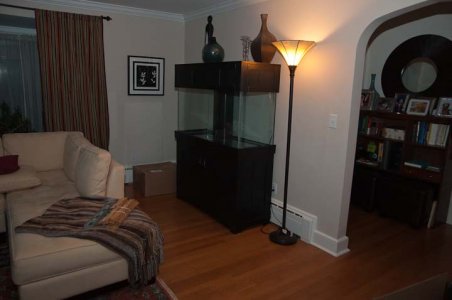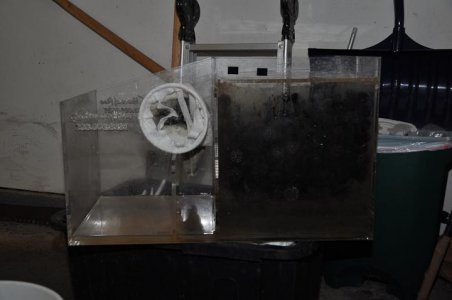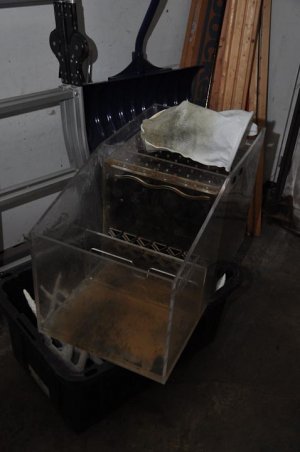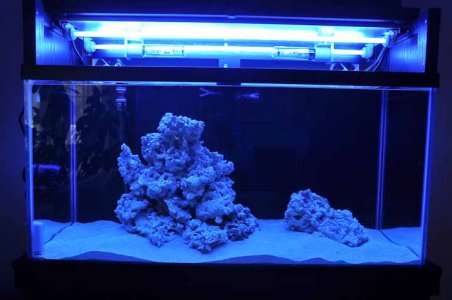Hi folks,
I'm bringing the 90 gallon oceanic into my living room this weekend and I'm getting a little nervous about the floor support for all that weight. Unfortunately, the spot it's going will put it parallel with the joists. There's a double joist supporting the wall behind it, but only single 2x9's spaced at 14" across the rest of the living room.
Anyone know of a local contractor or structural engineer that I might be able to consult? I have some friends in the business, but I don't think they're fully versed in this particular subject (live weight vs. dead weight, etc.). I'm not concerned about the floor giving way completely... just sag. I can only imagine the disaster from 90+ gallons if the tank seems were to give.
Oh, also - have any of you added a tank to an insurance policy?
I'm bringing the 90 gallon oceanic into my living room this weekend and I'm getting a little nervous about the floor support for all that weight. Unfortunately, the spot it's going will put it parallel with the joists. There's a double joist supporting the wall behind it, but only single 2x9's spaced at 14" across the rest of the living room.
Anyone know of a local contractor or structural engineer that I might be able to consult? I have some friends in the business, but I don't think they're fully versed in this particular subject (live weight vs. dead weight, etc.). I'm not concerned about the floor giving way completely... just sag. I can only imagine the disaster from 90+ gallons if the tank seems were to give.
Oh, also - have any of you added a tank to an insurance policy?







